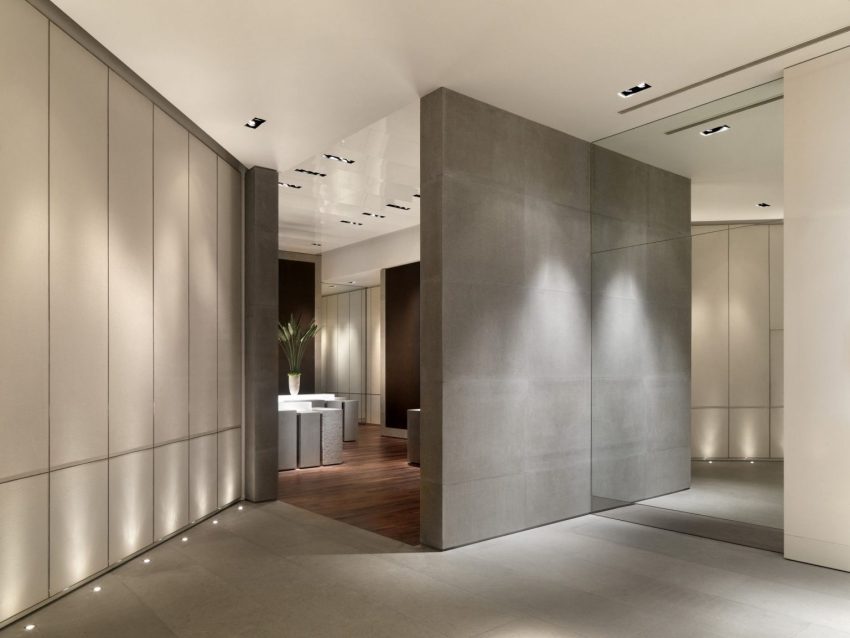What was once seen as an unsightly necessity is now embraced as a fundamental component of a building’s architecture. Choosing the right architectural air diffuser will undoubtedly have a strong influence on all temperature control and noise level. These technical aspects require a deeper look into its many complexities.
A common misconception that building materials manufacturers have about architects is that they go into a project knowing exactly what products they need based on a predetermined set of standards. The reality is that architects need to be informed about how many products are on the market and they are not afraid to ask questions and test the waters.
New products are not met with hesitation, but rather with a sense of curiosity and willingness to experiment. That said, in an age of information overload, it can sometimes be difficult for architects to know where to start. Choosing an air diffuser should not be a daunting task but a pleasant one especially when going directly to the manufacturer.
This guide aims to give architects a solid starting point in their research and equip them with the tools they need to ask the right questions throughout their client’s project.
Aesthetics
A key question to ask is: What shape should my customer’s air diffuser have? It’s normal to think of a square aluminum air diffuser with dull details, as they’ve been the norm for years. Chances are you’ve seen this type of traditional air diffuser at some point; perhaps more times than you personally would have liked. It’s hard to get excited about air diffusers when they don’t look particularly attractive.
Thankfully, this is a thing of the past. With so many options on the market today, you shouldn’t have to worry about having to compromise between aesthetics and functionality. There are circular, rectangular, and linear options that come in a variety of sizes. ACP has found a way to create air diffusers that blend seamlessly into the architecture, eliminating unsightly edges. Their fully customizable nature even allow for complete control over the shape, size, slot thickness, and slot angle. You can also paint over the air diffuser and add texture to match any unique ceiling types.
Performance
An air diffuser is built to serve an array of purposes. It provides air distribution, conditioning and ventilation. Essentially, all diffusers should adequately perform primary functions to provide optimal comfort:
Ensure the even delivery of air flow: When executed properly, diffusers should never cause discomfort to a building’s occupants. The air that’s being produced should feel as though it’s a seamless part of its surrounding environment. A diffuser should never forcefully blow air in a unidirectional manner and doing so should be considered a major alarm semnal. The slot-size and positioning of a diffuser’s vents play an important role in determining the direction of air flow and its distribution.
Keeping noise to an absolute minimum. Regardless of the type of building, unwanted noises will always be a problem for occupants and must be treated with utmost care.
This is especially true for environments that place particular importance on noise control, i.e. libraries, bedrooms and conference rooms. All architects know that they need to carry out accurate noise assessments in the process of developing their project. Diffusers is no exception. An improperly installed diffuser will undoubtedly produce unnecessary levels of noise and vibration. These vibrations usually occur when the sounds collide and clash with the type of diffuser material.
Technical support
It may seem minor but the important thing to consider is the level of support offered by the manufacturer. You’ll want a company that offers support across all communication channels. This helps you through the entire process, from choosing the ideal air diffuser to installation.
Consider the level of involvement a manufacturer is willing to take. Complete support will save you a lot of time, money and energy throughout the entire project life cycle.
When requesting quotes from manufacturers/resellers, keep the following in mind:
- Does it provide clear and detailed instructions on the installation process?
- Is there dedicated phone, chat or email support?
- Can I provide quick on-site support if needed?
- Does it liaise with all parties involved (e.g. HVAC designers, plumbing engineers and architects)?
Execution time
The execution time of a diffuser can vary between a few days and weeks, depending on its size and complexity. The manufacturing site also plays a key role in ensuring prompt deliveries. Choosing a diffuser that’s manufactured locally will ensure easy communication and a fast turnaround time for your project. What’s more, choosing an agile production team will be beneficial in situations that call for last-minute changes.
In the end
We hope this guide has given you the essential information you need to take the first step in expanding your knowledge of air diffusers and will enable you to make informed decisions in the future. Innovations and design has allowed architects to explore new options in an industry that has otherwise remained unchanged for years. By applying better solutions to traditional products, ACP Air Conditioning Products aims to be the perfect partner for architects, designers and installers.
